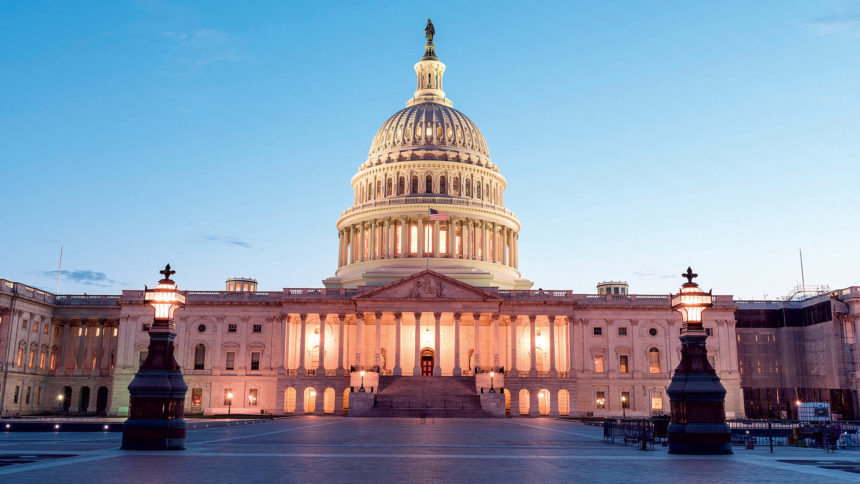
A bill introduced in the Senate Monday would delay the Centers for Medicare & Medicaid Services from implementing a proposed 7.69% Medicare payment reduction to home health agencies until 2026.
“The purpose of [the bill] essentially is to create what we see as an opportunity to correct where CMS is in terms of methodology and deal with the question of transparency relative to the data we asked for,” Bill Dombi, president of the National Association for Home Care & Hospice, said late Monday in a press conference at the Financial Management Conference in Las Vegas.
Other home care provider organization leaders praised the new legislation introduced Monday by home care champions Sens. Debbie Stabenow (D-MI) and Susan Collins (R-ME).
“We applaud Senators Stabenow and Collins for introducing this legislation, which will protect home health patients and providers from extreme cuts and help ensure continued access to safe, patient-preferred home healthcare for millions of American seniors and individuals with disabilities,” Joanne Cunningham, CEO of the Partnership for Quality Home Care, said in a statement.
Katie Smith Sloan, president and CEO of LeadingAge, called the freeze in payment rates “absolutely critical.” She added in a statement, “The 7.69% reduction laid out in the recent CMS proposed rule, totaling $1.33 billion in 2023 alone, could set home healthcare access back a decade or more. This bill wisely pushes off cuts that would protect vital home health services for vulnerable and underserved populations, and gives CMS more time to reconsider the devastating impacts of their proposed rule.”
In addition to freezing Medicare payment rates, the new bill, the Preserving Access to Home Health Act of 2022 (S. 4605), would make the following policy changes:
- Prevent CMS from implementing any permanent or temporary adjustment to home health prospective payment rates prior to 2026. This would delay cuts currently proposed by CMS for 2023 and beyond, allowing more time for CMS to refine its proposed approach to determining budget neutrality in home health.
- Ensure that any adjustments CMS determines to be necessary to offset increases or decreases in estimated aggregate expenditures are made by 2032, such that no cuts would be delayed beyond the end of the budget window.
- The legislation is intended to be self-implementing. It would become effective as of the date of enactment and includes instructions allowing for implementation by program instruction or other means.
A companion bill is expected to be released in the House in coming weeks. In the press conference Monday, Dombi noted that the association will use the time between now and Aug. 16, when comments are due on the rule, to garner additional support from members of Congress. He also hopes that the bill will help to influence CMS to change its course before it issues a final rule.
“We’re not putting all the eggs in the legislation basket,” Dombi told four members of the media in a conference room at the Caesars Palace property.
The negative repercussions of the proposed rule have dominated the discussions and sessions at NAHC’s Financial Conference. Dombi on Monday reiterated the deleterious effects the proposed rule would have on home health providers should it come to fruition. Some 44% of agencies would go into the negative margin, he said.
Dombi believes CMS is implementing the law that led to the Patient-Driven Groupings Model payment system incorrectly.
“In a noncompliant way, CMS has determined that the payment rate they paid in 2020, 2021 and now 2022, would lead to overpayment to provide services,” he said.
CMS also has not provided transparency regarding data that accounts for the cut, NAHC argues. Just prior to the press briefing, CMS notified NAHC that it was not going to provide data nor needed to provide it, Dombi relayed.
While the rule would hurt providers financially, it compounds other adverse issues affecting providers such as inflation, the cost of labor and a persistent workforce shortage. The core issue, however, Dombi argues, is CMS is operating under flawed methodology.
The reasoning behind the cut in the proposed rule stems from the law that became the basis for PDGM. CMS called for a 7.69% reduction to the base payment rate to meet a budget neutrality requirement as part of the transition to PDGM, NAHC explained in a press release. In the Balanced Budget Act of 2018, Congress set parameters for the creation of PDGM with a 30-day payment episode, removal of therapy utilization in payment determinations and a new case-mix methodology.
In developing PDGM, CMS was authorized to make adjustments to the base payment rates to account for behavioral assumptions. CMS was also authorized to make additional adjustments to maintain budget neutrality between projections of what would have been spent under the former prospective payment system and what has been spent under PDGM.
This is a developing story. Please check back for updates.


